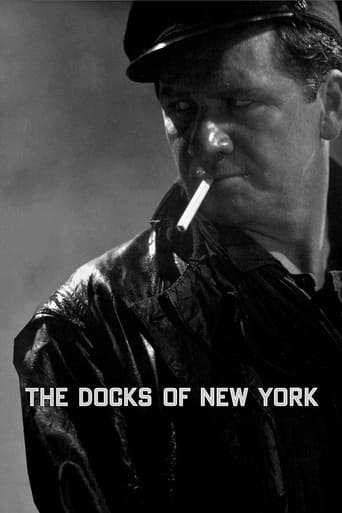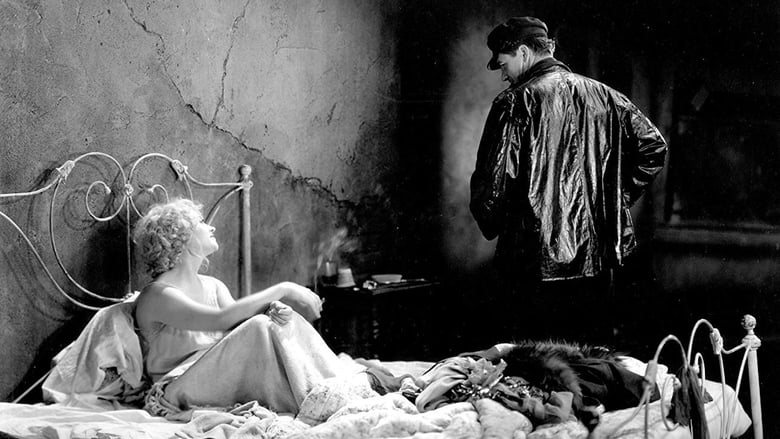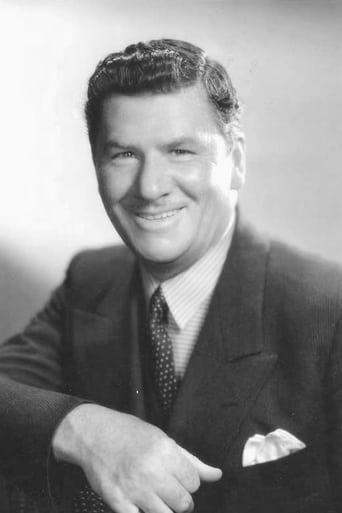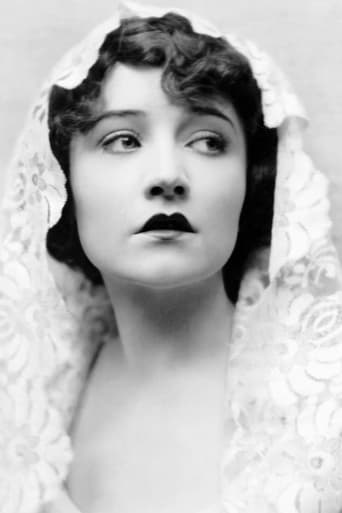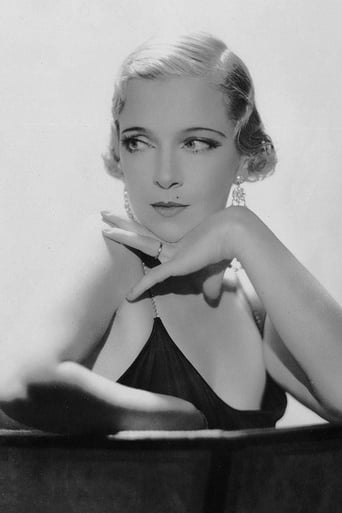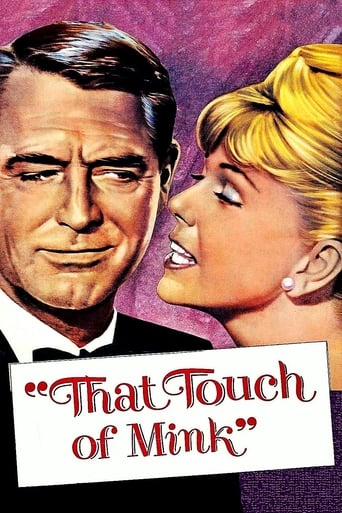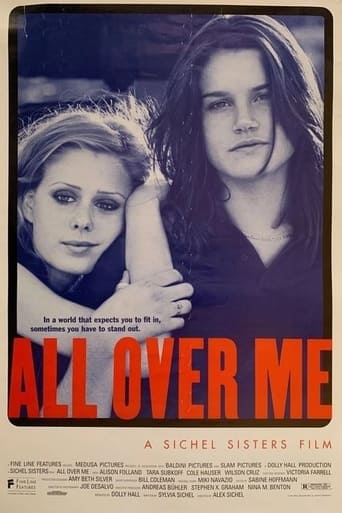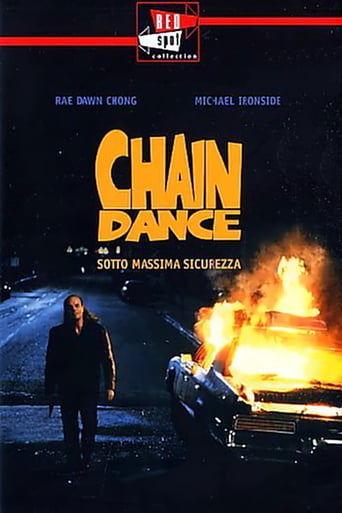The Docks of New York (1928)
A blue-collar worker on New York's depressed waterfront finds his life changed after he saves a woman attempting suicide.
Watch Trailer
Free Trial Channels
Cast


Similar titles
Reviews
just watch it!
good back-story, and good acting
Although it has its amusing moments, in eneral the plot does not convince.
In other words,this film is a surreal ride.
I was interested to read, after finding this silent film in the book 1001 Movies You Must See Before You Die, that it flopped, due to the earlier release of The Jazz Singer, the first talkie, nevertheless this picture has been rediscovered and is recognised as one of the last few great non-speaking films, directed by Josef von Sternberg (The Blue Angel, Shanghai Express). Basically Bill Roberts (George Bancroft) works as a stoker on a coal-red barge, his ship has just pulled into port in New York City, the crew are given one night for shore leave. While the ship was pulling in, Bill saves the life of beautiful prostitute Mae (Betty Compson) from drowning, she was attempting suicide as she lost all her money, had almost no clothing and felt remorse about her life up to then. Bill steals some clothes for Mae to wear and invites her out of a "good night", they go together to a bustling wharf pub. While there Bill almost gets into a fight with one of the pub-goers, after only a short time of knowing each other, Bill spontaneously proposes marriage to her, and to prove he is serious he asks the minister invited to conduct it, to make it legitimate. Mae is surprised by this quick but heartwarming gesture, but she is the disappointed the next morning when he must return to the ship, he says to her that he couldn't be serious about staying with her and fulfilling his marriage vows, because his job keeps him at sea. The ship sets out to sea, but Bill makes a decision before it leaves the city harbour, following events, he cannot leave Mae, so he swims ashore to find her. Going to a tavern, a patron directs him to the local Night Court, Mae is accused of stealing the clothes that had in fact been stolen for her. The judge sentences Mae to spend 30 days in jail, but Bill shows up in time to confess that it was in fact him that stole the clothes. The irritated judge gives him 60 days in jail for theft, Bill says to Mae that he will do the time for her, as Bill is taken away Mae pledges to "wait forever" for him. Also starring Olga Baclanova as Lou, Clyde Cook as "Sugar" Steve, Mitchell Lewis as Andy the Third Engineer and Gustav von Seyffertitz as "Hymn Book" Harry. It is a slightly odd fast-paced love story, a ship worker falling for a street walker who he rescued from the waters, but the inevitable events that occur make for interesting watching, there is some memorable imagery, a worthwhile silent drama. Very good!
The movie starts out with a ton of long shots and very dim lighting which made the stokers faces difficult to see when they were on the boat. The majority of the film takes place within a lively bar near the waterfront -- tracking shots were used to establish these scenes. It was difficult for me to follow what was going on. This may be a personal fault as I am not accustomed to silent films. What I did get a handle on was that the men were unable to keep their hands to themselves; I understand that it was a different time it was just highly uncomfortable to repeatedly see that type of interaction. Overall, it was an enjoyable movie with some dramatic scenes. They could have been shown a little better.
Initially it was very easy to forget you were watching a narrative film and to just imagine it was a documentary maker's homage to the seedier docklands of New York. Down in the ship's boiler room - George Bancroft and Clyde Cook didn't seem like actors, they actually looked like stokers, dreaming of going ashore. And the eerie silhouette of the girl on the pier - then the splash!! I really think that "The Docks of New York" is a triumph of von Sternberg's visual artistry. Mists and shadows, especially compelling was the scene when Bancroft carried the bedraggled Compson along the waterfront to her shabby room.Just as he had given Evelyn Brent's career a new lease of life, von Sternberg proceeded to do the same thing for Betty Compson. Although "The Docks of New York" was advertised as her comeback picture, according to Betty, she had never been away. In a chapter devoted to her in "From Hollywood" by DeWitt Bodeen, he chronicles her ups and downs of the twenties. She divorced her husband, director James Cruze, and was immediately besieged by creditors (to do with his bankruptcy). She then realised most of the major studios thought she was a has been but instead of taking it to heart, she went over to Chadwick, a poverty row studio and worked so hard she got back into shape and once again had the big studios bidding for her services. Another actor von Sternberg rescued was George Bancroft, who spent most of the 20s as a Western badman albeit with a hearty laugh. First casting him as the charismatic gangster in "Underworld" then as the burly stoker, Bill Roberts, in "The Docks of New York". Bancroft was larger than life!!!The story is simple, Roberts rescues a prostitute after she has thrown herself in the river. Initially hoping to paint the town red before departing the next morning, he takes a shine to Mae's vulnerableness and convinces her a good time is better than a watery grave. After carousing at the dockside tavern Bill gets carried away and proposes to Mae and after much coaxing she accepts - but she is serious as is the parson "Hymn Book Harry" (Gustav Von Seyffertitz) whose withering look upon those assembled tells you just what he thinks of them. Come the morning Bill is preparing to leave, treating the whole thing as a joke, but back on the ship......The music is wonderful with an orchestral score that has a real feel for the gritty reality of the docks - it also incorporates popular songs of the day "A Bird in a Gilded Cage", "The Sidewalks of New York" etc. I should have realised it was the brilliant Robert Israel, my favourite composer of silent film scores.Making just as much of a dazzling impression is Baclanova as a distinctly unglamorous waterside worker. She is married to Bill's brutish boss, but tells Mae "I was decent too - until I got married"!!!
Sternberg's best-regarded Silent film is also considered, along with F.W. Murnau's not dissimilar SUNRISE – A SONG OF TWO HUMANS (1927), Hollywood's artistic pinnacle during this era. The narrative is almost exclusively restricted to its exquisitely re-created titular setting, which is most evocatively lit throughout; incidentally, the waterfront crowd here is possibly the most boisterous ever depicted as something is always going on (brawls over women, drunks being thrown out, etc.) at the dive where a lot of the action takes place! The plot, as always with the director is secondary and somewhat plain: rowdy stoker George Bancroft (his third of 4 pictures for Sternberg, one of which – THE DRAGNET [1928] – is regrettably lost) goes ashore for one night, saves suicidal waif Betty Compson and marries her (presided over by sour-faced reverend Gustav von Seyffertitz, the ceremony sequence constitutes one of the film's highlights), knowing he will be leaving again the next morning.Complicating matters is the hero's bullying superior aboard ship, who sets his eyes on the girl as well – despite being married to Olga Baclanova (she, on her part, has been 'running around' during his time at sea!). Though we are never specifically told what drove Compson to make such an extreme gesture, we can assume she wanted out of the kind of sordid life that is perhaps mandated by this milieu (she certainly manages to pick herself up pretty quickly and also seems to build an immediate rapport with Baclanova!).Eventually, the latter's husband forces himself upon Compson and winds up dead; when she is about to be arrested, Baclanova's confession makes us realize it was not an act of self-defense but rather a crime of passion. Ironically, the heroine is still brought to trial when it is reported that the clothes she is wearing were stolen (by Bancroft) on the night she was saved!; just, then, however, he re-appears (having jumped off his ship!) to take the blame – and Compson promises to wait for him.As I said, the meticulous detail and beautiful cinematography are the main thing here – but the acting is commendable regardless, particularly the leading lady (who probably was never better though she would be Oscar-nominated for her subsequent movie, THE BARKER [1928], now forgotten and presumably unavailable for appraisal: for the record, I do own a couple of her other vintage efforts but they are, as yet, unwatched).

